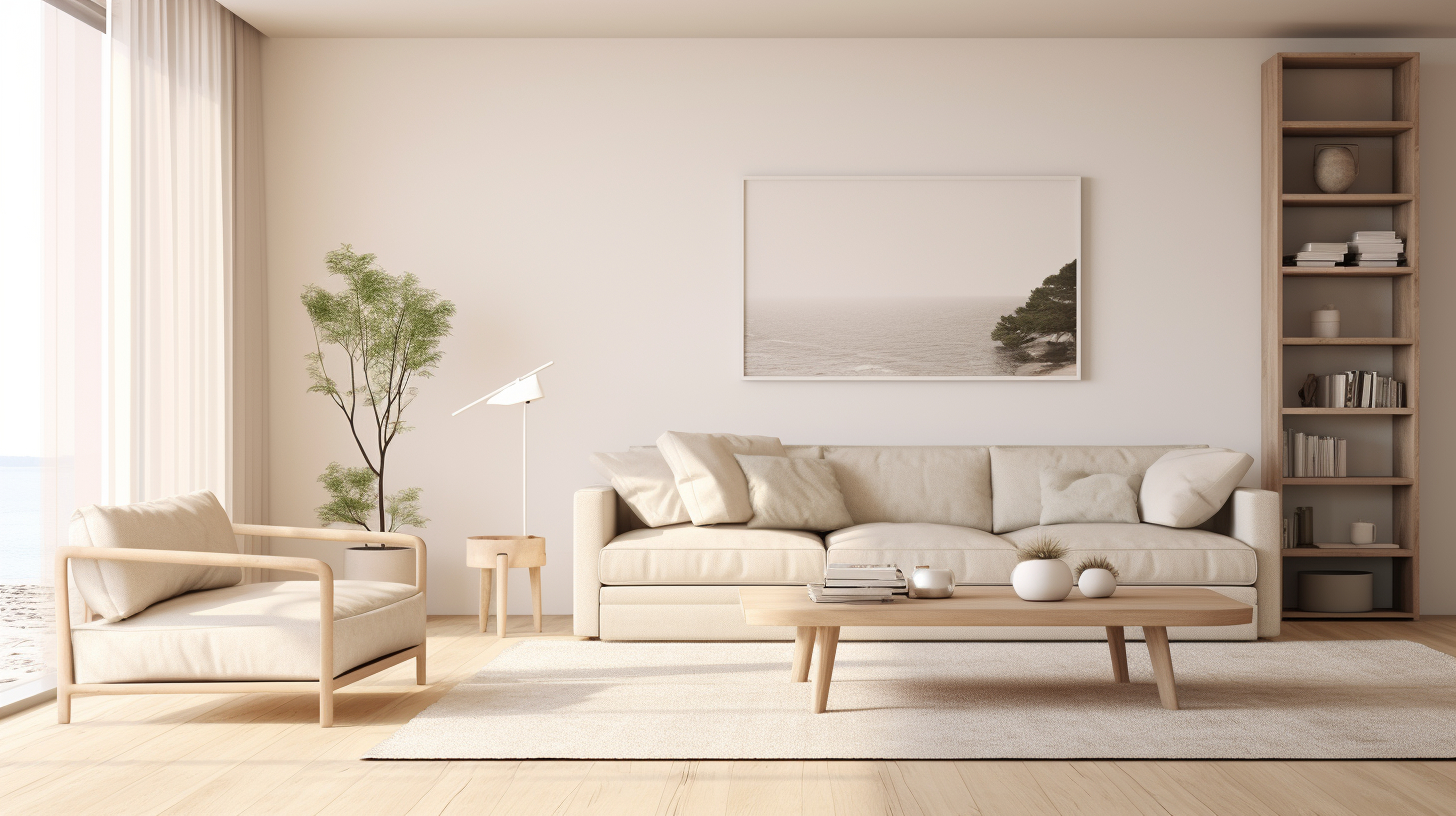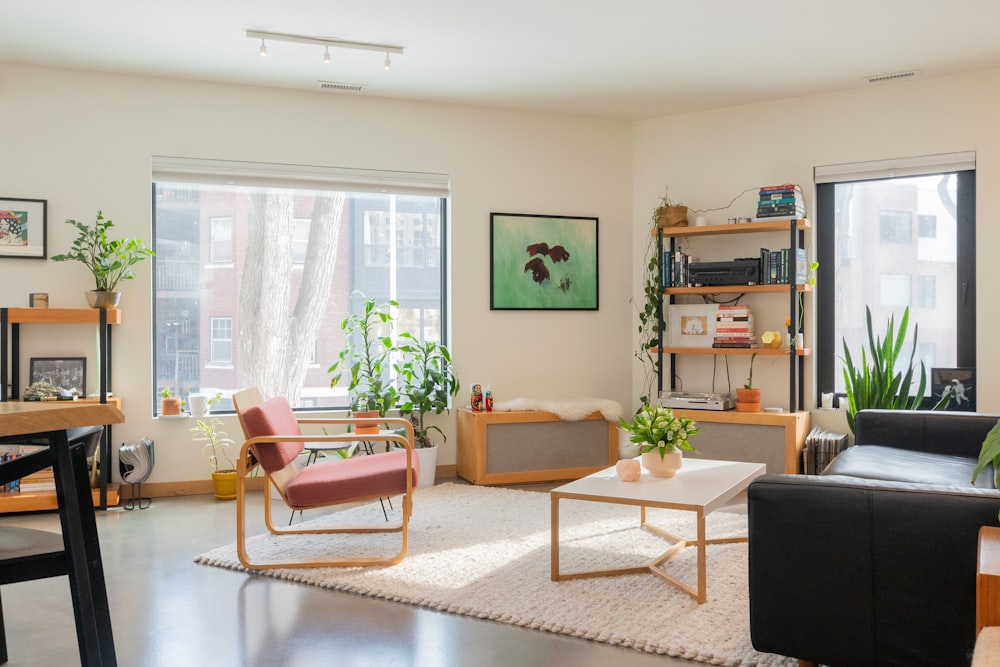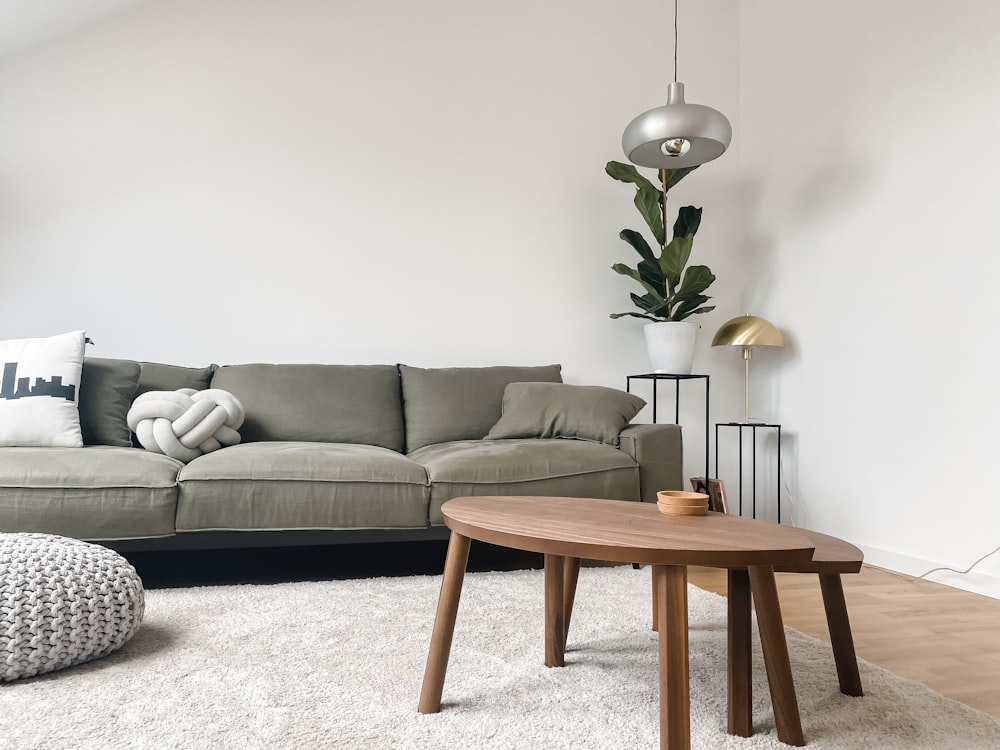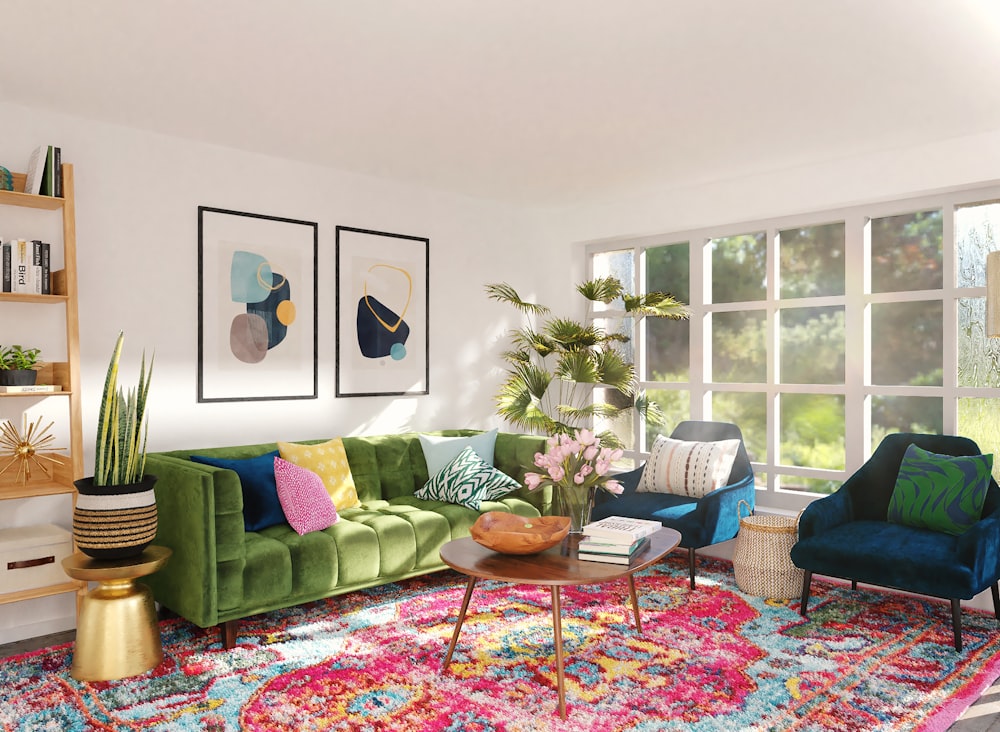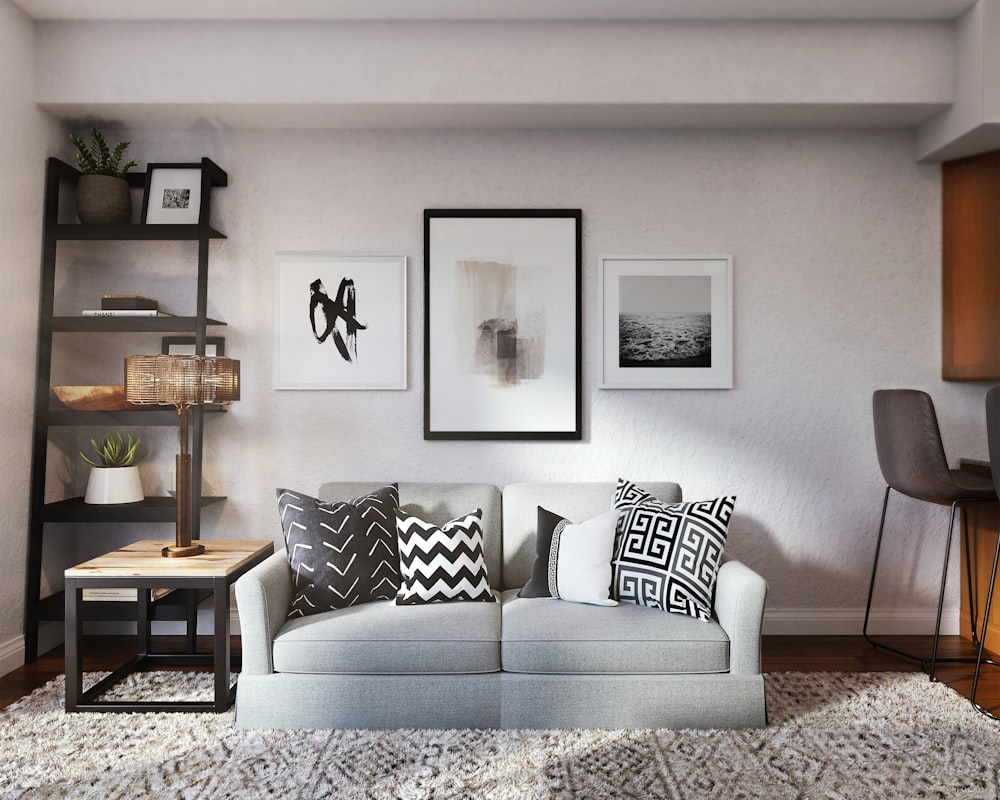Welcome to the world of minimalism, where simplicity meets tranquility. In today’s fast-paced and cluttered society, many individuals are seeking solace in minimalist design to create a serene living environment. If you find yourself yearning for a peaceful sanctuary that evokes a sense of calm and balance, then this article is for you.
Achieve a Serene Living Environment with Minimalist Design
In this guide, we will look into the process to achieve a serene living environment, delve into the principles of minimalist design and explore practical ways to bring tranquility into your home. From decluttering and organizing to selecting the right colors and furniture, we will cover every aspect of creating a serene living space. So, are you ready to embark on a journey towards a more peaceful and harmonious lifestyle? Let’s dive in!
“Your home should be the antidote to stress, not the cause of it.” – Peter Walsh, Organizing Expert
Understanding Minimalism
Defining Minimalist Design
Minimalist design is a concept that embraces simplicity, functionality, and aesthetic beauty. It is about reducing clutter and focusing on the essentials. In the world of interior design, minimalism promotes a clean and uncluttered living environment. Here are the key characteristics of minimalist design:
- Simplicity: Minimalist design focuses on simplicity and the elimination of unnecessary elements. It embraces clean lines, minimal ornamentation, and a sense of open space.
- Functionality: Minimalist design prioritizes functionality. Each item in a minimalist space should serve a purpose and have a clear function.
- Minimal Color Palette: Minimalist spaces often feature a limited color palette, usually consisting of neutral shades such as white, beige, grey, and black. This creates a sense of calmness and allows the furniture and decor to shine.
- Uncluttered Spaces: Minimalist design places a strong emphasis on decluttering. It encourages getting rid of unnecessary items and keeping surfaces clear and organized.
The Benefits of Minimalist Living
Adopting a minimalist lifestyle and creating a minimalist living environment offers numerous benefits:
- Reduced Stress: Clutter and excessive belongings can contribute to feelings of overwhelm and stress. By eliminating excess and creating a neat and organized space, minimalist design promotes a sense of calmness and tranquility.
- Improved Focus and Productivity: A minimalist environment minimizes distractions, allowing you to focus more easily and be more productive. Without the visual clutter, your mind can remain clear and focused on the task at hand.
- Easy Maintenance: With fewer items to clean and organize, maintaining a minimalist living space becomes significantly easier. Cleaning, tidying up, and finding things become simpler and less time-consuming.
- Enhanced Visual Appeal: The clean lines and uncluttered nature of minimalist design create a visually pleasing and timeless aesthetic. It allows the architectural and design elements to shine, making the space feel more modern and sophisticated.
By understanding the principles of minimalist design and the benefits it offers, you can begin the process of creating a serene living environment that promotes tranquility and peace of mind.
Decluttering and Organizing
Do you ever feel overwhelmed by the amount of stuff in your living space? The key to achieving a serene and tranquil living environment is decluttering and organizing. By getting rid of unnecessary items and creating a sense of order, you can create a space that promotes peace and simplicity. Here are some tips to help you declutter and organize your home:
Getting Rid of Unnecessary Items
- Take it one room at a time: Start by tackling one room or area of your home at a time. This will help you stay focused and avoid feeling overwhelmed.
- Marie Kondo method: Follow the famous KonMari method by Marie Kondo. Sort through your belongings and keep only the items that spark joy. Let go of anything that no longer serves a purpose or brings you happiness.
- Donate or sell: Instead of throwing away items, consider donating or selling them. This way, your unwanted possessions can find new homes, and you can potentially earn some extra cash.
- Create designated spaces: Assign a specific place for each item in your home. This will help you maintain organization and make it easier to find things when you need them.
Organizing Essentials
- Use storage solutions: Invest in storage solutions such as bins, baskets, and shelves to keep your belongings organized. Use clear containers for easy visibility and label them to ensure everything has its place.
- Utilize vertical space: Make the most of your vertical space by installing shelves or hanging organizers. This will help you maximize storage without taking up valuable floor space.
- Utilize hidden storage: Look for furniture pieces that offer hidden storage compartments, such as ottomans or coffee tables with built-in storage. This allows you to keep essential items close by while maintaining a clutter-free environment.
- Create a daily organizing routine: Dedicate a few minutes each day to tidy up and put things back in their designated spaces. This small habit will prevent clutter from accumulating and keep your space consistently organized.
Remember, decluttering and organizing is an ongoing process. Regularly assess your belongings and make an effort to let go of items that no longer serve a purpose. By implementing these tips, you can create a clean and organized living space that promotes tranquility and peace of mind.
Choosing a Neutral Color Palette
When it comes to creating a tranquil living environment, choosing the right color palette is key. A neutral color palette can have a soothing effect on your space, creating a calm and peaceful atmosphere. Not only are neutral colors versatile and timeless, but they also provide a great backdrop for minimalist design. Here are some tips for choosing a neutral color palette:
The Power of Neutrals
Neutral colors, such as whites, beiges, greys, and browns, are known for their ability to create a sense of balance and simplicity. They are also incredibly versatile and can easily adapt to different styles and aesthetics. Whether you prefer a modern, Scandinavian, or rustic look, a neutral color palette can effortlessly complement your chosen design.
Using Earthy Tones
Earth tones, which include shades of brown, beige, and green, can add warmth and depth to a neutral color palette. These colors evoke a sense of nature and can create a serene and grounding atmosphere in your home. Consider incorporating earthy tones through furniture, accessories, or even accent walls for a touch of tranquility.
Tip: When selecting neutral colors, pay attention to the undertones. Warm neutrals have yellow or red undertones, while cool neutrals have blue or grey undertones. Choose the undertones that best align with the mood you want to create in your space.
Creating Contrast
While a neutral color palette is characterized by its lack of bold and vibrant colors, you can still create visual interest by incorporating contrast. For example, pairing light neutrals with darker shades can create depth and dimension in your space. Similarly, mixing different textures and materials can add visual contrast and tactile appeal.
Fun Fact: Did you know that color psychologists believe that certain neutral colors can have a psychological impact? For example, white is associated with purity and cleanliness, while grey promotes feelings of calmness and stability.
Layering with Neutrals
One of the advantages of using a neutral color palette is the flexibility it offers for layering. By using different shades of neutral colors, you can create depth and visual interest without overpowering the space. For instance, you can layer different shades of beige, ivory, and off-white to add dimension to your walls or furniture.
“A neutral color palette provides a serene and versatile backdrop for your minimalist design, allowing the focus to be on simplicity and functionality.” – Interior Design Expert
Remember, creating a serene living environment starts with careful consideration of your color palette. By choosing neutral colors and incorporating earth tones, you can establish a sense of tranquility in your space. Don’t be afraid to play with contrast and layering to add visual interest. With a well-chosen neutral color palette, you’ll be well on your way to achieving a serene and minimalist living space.
Furniture and Layout
When it comes to creating a serene living environment with minimalist design, one of the key aspects to consider is the furniture and layout of your space. The furniture you choose and how you arrange it can greatly impact the overall look and feel of your home. Here are some tips to help you make the most of your minimalist design:
Selecting Functional Furniture
- Keep it simple: Minimalist design is all about simplicity and functionality. Choose furniture pieces with clean lines and minimal ornamentation. Avoid overly decorative or ornate furniture that can clutter your space.
- Opt for multi-functional pieces: Make the most of your limited space by opting for furniture that serves multiple purposes. For example, a coffee table with built-in storage can provide a place to display decor while also offering a convenient storage solution.
- Invest in quality pieces: Minimalist design is not about quantity but quality. Invest in furniture that is well-made and durable. Quality pieces will not only last longer but also add a sense of sophistication to your space.
- Consider the scale: When selecting furniture, consider the scale of your space. Oversized furniture can make a room feel cramped, while furniture that is too small can make a space feel empty. Find the right balance by choosing pieces that complement the size of your room.
Optimizing Space and Flow
- Create open pathways: One of the core principles of minimalist design is to create a sense of openness and spaciousness. Arrange your furniture in a way that allows for easy movement and clear pathways throughout your space. Avoid blocking windows or doorways with furniture.
- Focus on functionality: Consider the flow of your space and how you use it on a daily basis. Arrange your furniture in a way that supports your daily activities and enhances functionality. For example, position your desk near a window for natural light while working.
- Maximize vertical space: In small spaces, vertical space is your best friend. Utilize wall-mounted shelves or floating furniture to maximize storage without taking up valuable floor space. This will help create a sense of openness and declutter your room.
By selecting functional furniture and optimizing the layout of your space, you can create a serene living environment that is both visually appealing and practical. Remember, minimalism is all about simplicity and functionality, so choose furniture pieces that serve a purpose and arrange them in a way that maximizes the flow and openness of your space.
Also Read: Minimalist Design : Essential Principles for Creating a Clutter-Free Home in 2023
Mindful Decor and Accessories
When creating a serene living environment with minimalist design, it’s important to be mindful of the decor and accessories you choose. Mindful decor and accessories not only enhance the overall aesthetic of your space but also contribute to the sense of tranquility you want to achieve. Here are some tips on how to incorporate mindful decor and accessories into your minimalist design:
1. Simple and Purposeful Decor Pieces
- Choose decor items that have a purpose and meaning to you. Avoid cluttering your space with unnecessary decorative objects.
- Opt for minimalistic artwork or wall hangings that create a sense of calm and tranquility.
- Consider using natural elements such as plants, stones, or shells as decorative accents. They not only add visual interest but also bring a touch of nature indoors.
- Use textures and materials that evoke a sense of serenity, such as soft linens, bamboo, or natural wood.
2. Bringing Nature Indoors
- Incorporating plants into your minimalist design can have a profound impact on the overall atmosphere of your space. Indoor plants not only add beauty but also promote better air quality and create a sense of tranquility.
- Consider adding a few potted plants or a small indoor garden to your living space. Choose low-maintenance plants that thrive indoors, such as succulents or peace lilies.
- Create a designated spot for your plants, such as a minimalist plant shelf or a hanging planter, to showcase their beauty while keeping the rest of your space clutter-free.
Remember, the key to mindful decor and accessories is to choose items that truly resonate with you and contribute to the overall sense of tranquility in your space. Keep it simple, purposeful, and in harmony with the minimalist design principles you have embraced.
“Simplicity is the ultimate sophistication.” – Leonardo da Vinci
Enhancing Natural Light and Ventilation
When it comes to creating a serene living environment, the role of natural light and proper ventilation cannot be overstated. These elements have a significant impact on our well-being and can transform any space into a calming oasis. Here are some tips on how to enhance natural light and ventilation in your home to achieve a tranquil atmosphere:
Maximizing Natural Light
- Clear the Clutter: Start by removing any unnecessary obstructions such as heavy curtains or furniture that block the windows. This will allow the natural light to flood into the room and create a bright and airy feel.
- Use Light Colors: Opt for light-colored walls and furniture, as they help reflect natural light, making the space appear larger and more inviting. Whites, pale grays, and pastel shades are great choices to create a fresh and open ambiance.
- Install Skylights or Sun Tunnels: If possible, consider adding skylights or sun tunnels to bring in additional natural light. These architectural features can create a stunning effect and brighten up any room, especially those with limited access to windows.
- Leverage Mirrors: Strategically place mirrors opposite windows to reflect and amplify natural light. Mirrors not only make the space feel larger but also enhance the overall brightness of the room.
- Trim Trees and Shrubs: Trim any trees or shrubs outside your windows that may be blocking sunlight from entering your home. This simple step can significantly improve the amount of natural light that filters through the windows.
Improving Airflow
- Open Windows: One of the simplest ways to improve ventilation in your home is to open windows whenever possible. This allows fresh air to circulate and removes any stagnant air or odors.
- Consider Window Treatments: Opt for light and breathable window treatments that allow air to flow freely, such as sheer curtains or blinds. Consider installing window screens to keep insects out while still allowing fresh air in.
- Use Ceiling Fans: Ceiling fans can help improve air circulation and create a gentle breeze in the room. They are an energy-efficient way to cool down the space during warmer months while promoting air movement.
- Ventilation Systems: If your home lacks adequate natural ventilation, consider installing mechanical ventilation systems, such as exhaust fans, to remove stale air and bring in fresh air from outside.
- Plants for Better Air Quality: Besides adding a touch of nature to your space, certain houseplants can also improve indoor air quality. Plants like snake plants, spider plants, and peace lilies are known for their air-purifying properties.
By incorporating these strategies, you can enhance the natural light and ventilation in your home, creating a serene environment that promotes relaxation and well-being. Remember, a well-lit and well-ventilated space not only looks beautiful but also has a positive impact on your mood and overall happiness. So, let the sunshine in and let the breeze flow through your home for a refreshing living experience.
Embracing Minimalist Technology

In the realm of minimalist living, technology can play a significant role in creating a serene and clutter-free environment. By embracing minimalist technology, you can simplify your digital life, reduce distractions, and enhance the overall tranquility of your living space. Here are some tips for incorporating minimalist technology into your lifestyle:
1. Digital Decluttering
Just as physical clutter can accumulate in our homes, digital clutter can also overwhelm our devices and minds. Take the time to declutter your digital space and create a more organized and stress-free experience. Here’s how:
- Delete unnecessary files and apps: Get rid of files, apps, and programs that you no longer use or need. This will free up storage space and make your digital environment more streamlined.
- Organize your digital files: Create a folder system for your files, photos, and documents, making it easier to locate and access them when needed.
- Unsubscribe from unnecessary emails: Unsubscribe from newsletters, promotional emails, and notifications that clutter your inbox and distract you from more important tasks.
- Use cloud storage: Take advantage of cloud storage services to store your files and documents securely. This will help reduce the clutter on your devices and ensure that your important data is backed up.
2. Streamlining Electronics
In a minimalist home, electronics should serve a purpose and be intentionally chosen to enhance your lifestyle. Here are some ways to streamline your electronics:
- Invest in multi-purpose devices: Instead of having multiple devices for different functions, consider investing in multi-purpose devices that can perform various tasks. For example, a smartphone or tablet can serve as your phone, camera, e-reader, and more.
- Minimize cables and cords: Keep your space tidy by using cable management solutions to hide and organize cables. Consider using wireless chargers and Bluetooth-enabled devices to reduce the number of cords cluttering your surfaces.
- Create designated charging stations: Designate an area in your home where you can charge and store your electronics. This will prevent them from being scattered around and create a dedicated space for these devices.
By adopting minimalist technology practices, you can declutter your digital life and create a more serene and organized living environment. Remember, the goal is to use technology intentionally and minimize distractions, allowing you to focus on what truly matters in your life.
Creating Tranquil Spaces
After decluttering your home and embracing a minimalist lifestyle, it’s time to focus on creating tranquil spaces within your living environment. These spaces should evoke a sense of calm and tranquility, allowing you to unwind and relax after a long day. Whether it’s your bedroom, living room, or a dedicated relaxation area, here are some tips to help you achieve serenity in your home:
Designing a Calming Bedroom
Your bedroom should be a sanctuary, a place where you can escape from the stresses of the outside world. Here are a few ideas to create a serene bedroom:
- Choose a soothing color palette: Opt for soft and calming colors such as muted blues, greens, and neutrals. These colors promote relaxation and a peaceful atmosphere.
- Invest in comfortable bedding: A comfortable mattress, soft sheets, and fluffy pillows can make all the difference in creating a serene sleep environment.
- Reduce clutter: Keep your bedroom minimal and clutter-free. This will create a calming visual appeal and help you maintain a peaceful mindset.
- Incorporate nature-inspired elements: Introduce elements from nature, such as potted plants or a small indoor fountain, to bring a sense of tranquility to your bedroom.
Relaxation Areas
Having a dedicated space for relaxation can greatly enhance your overall well-being. Here are some ideas for creating a tranquil relaxation area:
- Choose a quiet corner: Find a cozy nook in your home where you can retreat to for some quiet and relaxation. It could be a window seat, a reading corner, or even a small meditation space.
- Comfortable seating: Invest in a comfortable chair or a plush floor cushion where you can sit and unwind. This will help create a space that invites relaxation.
- Soft lighting: Use soft, warm lighting to create a calming ambiance in your relaxation area. Avoid harsh overhead lights and opt for gentle table lamps or floor lamps instead.
- Incorporate natural elements: Bring the outdoors in by incorporating natural elements like plants, bamboo or wooden accents, and soft fabrics in earthy colors.
Remember, the key to creating tranquil spaces is to keep things simple and clutter-free. By incorporating these tips into your home, you can transform your space into a haven of relaxation and serenity.
Sustainable Practices
Living a minimalist lifestyle goes beyond just having a clean and clutter-free home. It also involves adopting sustainable practices that help reduce waste and promote eco-friendly living. By incorporating sustainable practices into your minimalist design, you can create a serene living environment that not only benefits you but also the planet. Here are some tips to help you embrace sustainable practices in your minimalist lifestyle:
Reducing Waste and Consumption
- Practice mindful consumption: Before purchasing new items, ask yourself if you really need them. Consider borrowing, renting, or buying second-hand items instead. This reduces the demand for new products and reduces the amount of waste generated.
- Minimize packaging waste: Choose products with minimal packaging or packaging that can be easily recycled. Opt for products in bulk or with refillable containers to reduce packaging waste.
- Recycle and compost: Set up a recycling system in your home to separate recyclables from non-recyclables. Compost organic waste to reduce the amount of food waste that goes to landfills.
- Avoid single-use items: Invest in reusable products such as cloth bags, water bottles, and coffee cups. Avoid single-use plastics like plastic bags, straws, and disposable cutlery.
Eco-Friendly Materials
- Choose sustainable materials: When selecting furniture and decor pieces, opt for items made from eco-friendly materials such as bamboo, reclaimed wood, or recycled plastic. These materials have a lower environmental impact compared to materials like virgin plastic or non-sustainable wood.
- Use non-toxic and low VOC products: Look for paints, finishes, and cleaning products that are non-toxic and have low volatile organic compound (VOC) content. These products are better for your health and the environment.
- Invest in energy-efficient appliances: Choose appliances with high energy efficiency ratings to reduce energy consumption and lower your carbon footprint. Look for the Energy Star label when purchasing appliances.
By incorporating these sustainable practices into your minimalist design, you can create a living environment that is not only aesthetically pleasing but also eco-friendly. Remember, minimalism is about intentional living and making conscious choices that align with your values, including sustainability. So, go ahead and create a serene sanctuary that not only brings you tranquility but also contributes to a healthier planet.
Also Read: The Benefits of Minimalism : Declutter Your Mind, Declutter Your Space in 2023
Conclusion
Creating a serene living environment with minimalist design is all about embracing simplicity and finding peace in the absence of clutter. By understanding the principles of minimalism, decluttering and organizing our spaces, choosing a neutral color palette, selecting functional furniture, and incorporating mindful decor, we can achieve a tranquil, clutter-free home.
Achieving a minimalistic lifestyle not only improves the aesthetics of our living spaces but also has numerous benefits for our well-being. It promotes a sense of calm, reduces stress, and enhances productivity. By creating a minimalist home environment, we can truly embrace the concept of less is more.
Remember, the journey towards a minimalist lifestyle is not a one-time effort. It requires ongoing decluttering, organization, and mindful decision-making. With dedication and commitment, we can transform our homes into peaceful retreats.
So, why not start today? Explore the world of minimalist design, declutter your spaces, and create a home that reflects your desire for simplicity and tranquility. Trust the Minimalist Home Guru to guide you through this journey and create the calming and clutter-free living space you’ve always dreamed of.
For more inspiration and guidance on how to incorporate minimalist design principles into your home, make sure to visit Minimalist Home Guru. Let us help you create a space that nurtures your well-being and brings you joy.
Frequently Asked Questions
- What is minimalist design?Minimalist design is a style characterized by simplicity, minimal ornamentation, and clean lines. It focuses on functionality and eliminating excess to create a serene and clutter-free living environment.
- How can minimalist design contribute to a serene living environment?Minimalist design promotes a serene living environment by reducing visual clutter, creating a sense of calmness, and allowing for better focus and relaxation. It emphasizes a decluttered and organized space, which can contribute to a peaceful atmosphere.
- What are some key elements of minimalist design?Some key elements of minimalist design include neutral color palettes, clean and simple lines, uncluttered spaces, functional furniture, and the use of natural materials. These elements help create a tranquil and harmonious living environment.
- How can I incorporate minimalist design into my home?To incorporate minimalist design into your home, declutter and organize your space, choose furniture with clean lines and simple designs, opt for neutral color schemes, maximize natural light, and focus on functionality rather than unnecessary decorative items.
- Can minimalist design be suitable for any living space?Yes, minimalist design can be suitable for any living space, regardless of size or style. It can work well in small apartments, larger houses, modern homes, or even traditional interiors. The key is to adapt the core principles of minimalism to your specific space and personal taste.

